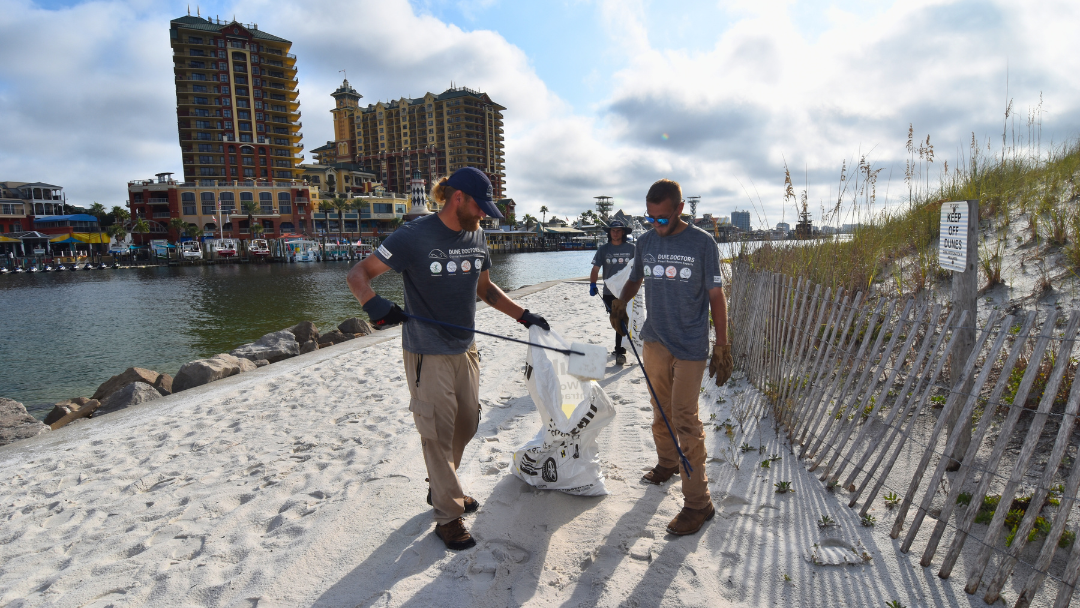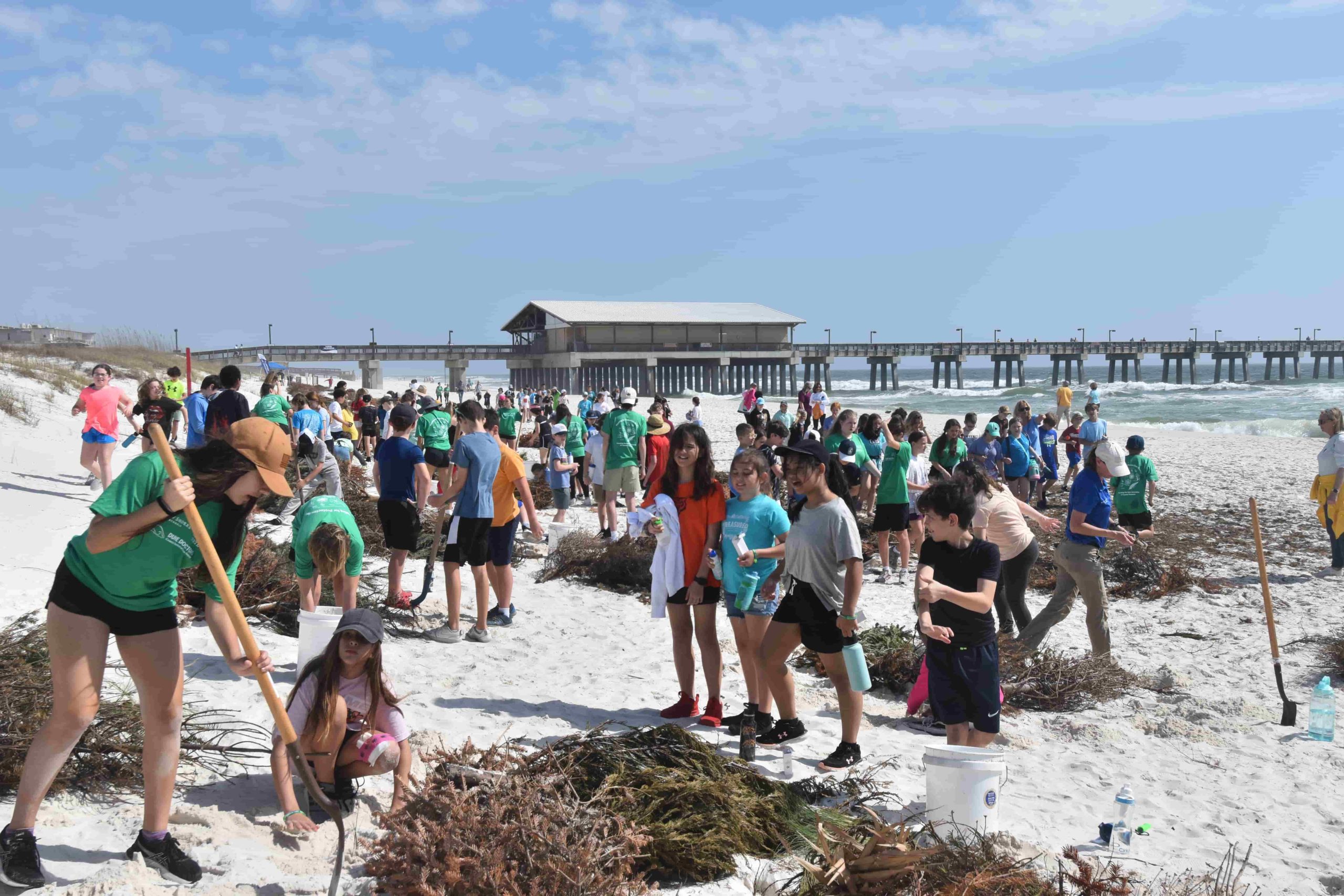Irrigation Systems Harm Sand Dunes
It seems counter-intuitive, but watering the vegetation on your sand dunes is actually detrimental to the health and strength of the dune system. How is this possible? The availability of moisture close to the surface of the sand will dissuade the native plants from growing deep roots in search of water. Irrigation also encourages invasive species to propagate over the sand dune. We frequently discuss how planting appropriate vegetation on your sand dunes is necessary to anchor the dune in place. Most plants that grow along the coast (both naturally-occurring and those that were installed) have adapted to thrive in tough environmental conditions. They are very hardy, but they do require some unique maintenance such as dethatching (removal of dead plant material). However, unlike lawns and gardens, dune vegetation does not need regular watering. In fact, installing an irrigation system on your dunes will compromise the dune’s resiliency. Initially, the plants may appear lush and vibrant; but, over time, routine irrigation will kill the native vegetation, increasing the rate at which your sand dunes erode.
Deep Root Systems Build Powerful Dunes
Plants that grow along the coast are resilient by nature. They thrive in an ecosystem characterized by harsh winds, periodic driving rain, and scorching sun. Not only do they enhance the sand dunes aesthetically, but they also fulfill a vital role in defending your property from coastal erosion. If you were to dissect a sand dune with healthy vegetation, you would find that the plants have laid down impressive web-like root systems to reach moisture located deep within the sand. Without regular irrigation, the plants’ roots will grow upwards of 30ft in search of deep water. These roots weave their way down through the sand, creating a natural net that anchors the dune in the event of a storm. However, with the provision of a regular source of water at the surface, the plants lose the incentive to put down deep, vertical roots in favor of concentrating their root growth horizontally along the surface. This shallow root system creates a cascade effect where the sand dunes (no longer anchored by deep, complex root systems) suffer tremendous sand loss at the slightest storm.
Excess Moisture Causes Root Rot
With easy access to water, your vegetation will redirect its focus and energies from root growth to stem and leaf production. This may not seem like an issue, but to understand why it is detrimental to the plants’ health you must first understand the continuous cycle coastal plants undergo of being buried in the sand. In this cycle, wind-borne sand repeatedly covers the base of dune vegetation. This burial cycle is critical to the plants’ survival as the deposition of sand anchors specialized stems that help propagate the plants’ root system. This cycle also buries dead organic material allowing it to decompose, under the sand, into usable nutrition for the plants. But, if the plants produce leaves at a faster rate than which the sand can bury the additional growth, the excess leaves will remain above ground and trap moisture. The damp organic material will, in turn, rot and potentially attract diseases that can weaken and/or kill the plants.
Irrigation Attracts Invasive Species
As detrimental as extra watering may be to plants that are native to an environment frequently subjected to droughts, this is not the case for invasive species. Invasive non-native plants will find the moisture-rich sand a favorable environment in which to grow. These invasive species are a real concern for multiple reasons. With time, these weeds will take over substantial parts of the dune by overshadowing and eventually choking out sea oats and other native plants. This is because, without adequate sunlight, native vegetation eventually dies. These non-native vines are also equipped with bean-like seed pods which, when ripe, spread their seeds far and wide. These seed pods increase the presence of weeds exponentially over time. The more water these plants receive (i.e. irrigation / regular watering of the dune) the faster and further they grow.
Consequences of Weed-Whacking
Once the weeds take hold of your sand dune, the process of extracting them is difficult and requires delicate pulling in order to avoid uprooting the native vegetation. We strongly DISCOURAGE the use of weed whacker-type trimmers to manage the weeds. The end result will be a thick mat of decaying vegetation and a massive broadcast of the seeds. It may seem like an efficient short-term solution, but by next summer the rapid growth of vines will choke out the beneficial vegetation and spread to neighboring properties too.
Have an Irrigation System? Turn It Off!
In order to avoid these nightmare scenarios, we recommend that you avoid watering your dunes altogether. If you choose to water, we suggest that it be NO MORE than once a week. And, always be on the lookout for invasive species. If you are working towards reversing the effects of installing an irrigation system and need help identifying intrusive species, reach out to us. As you develop a greater understanding of how sand dunes work, you will gain confidence in employing the necessary steps in order to create a thriving dune ecosystem. Remember, coastal plants are not the same as conventional yard/garden plants. They need care that is specifically tailored to their needs if they are to offer your property any kind of protection in the event of a storm. Aside from saving your dunes, not irrigating will save you money.






